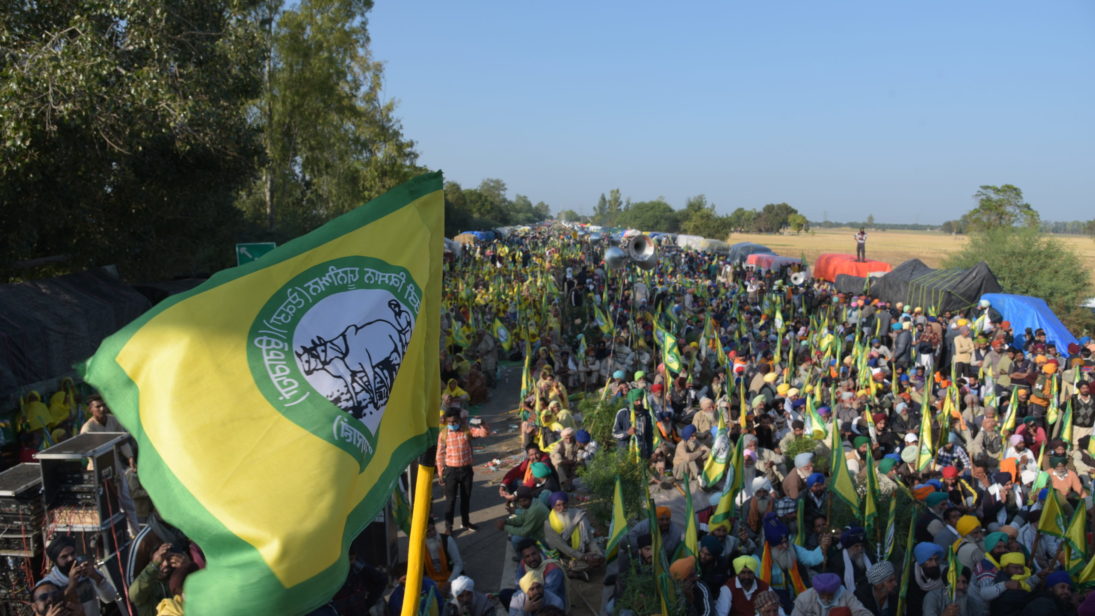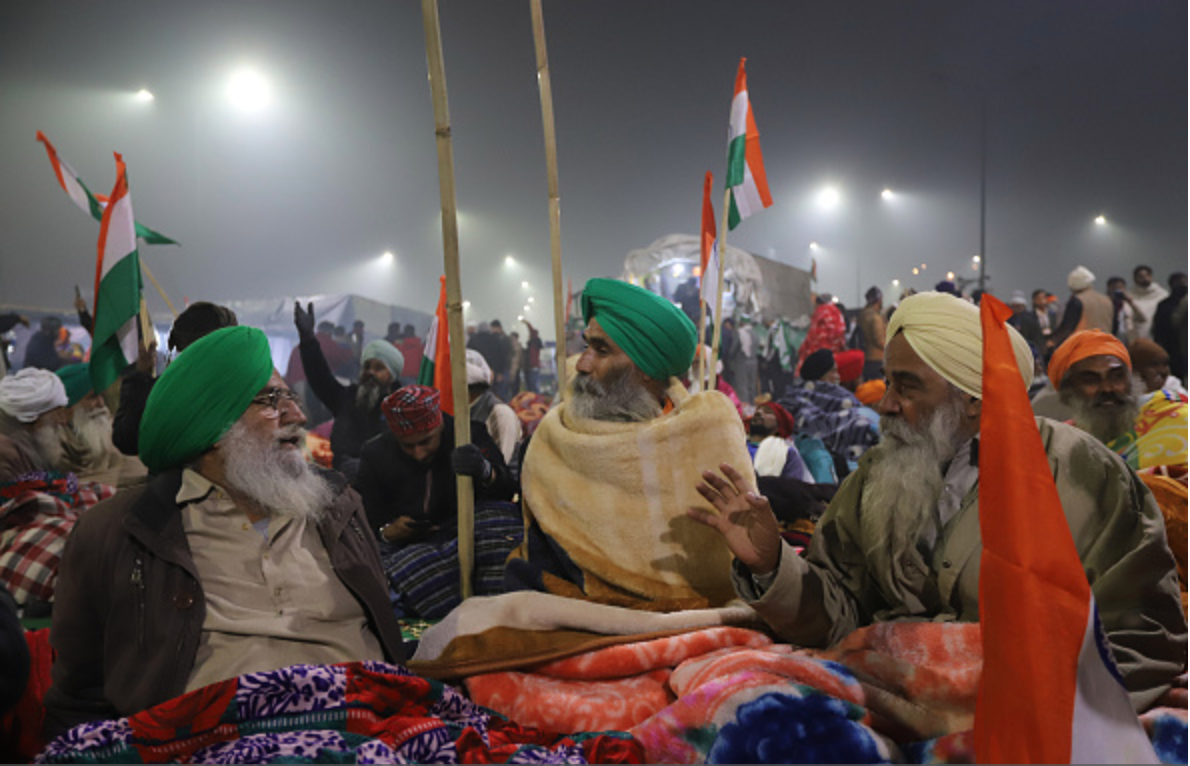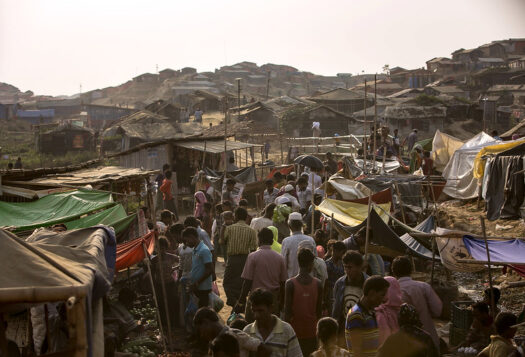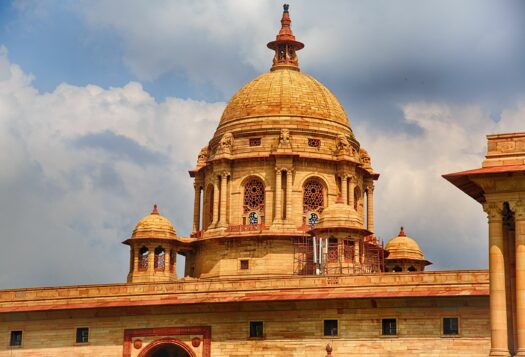
Show of Strength by Indian Farmers
After more than two months of camping in the outskirts of Delhi as a mark of protest against the three farm laws—which they believe to be skewed in the favor of large corporations and private players—the farmers declared that they would parade through the capital in peaceful protest on January 26. This day is of national importance as it commemorates India’s constitution coming into effect. It is notable for the annual Republic Day Parade, featuring the nation’s armed forces.
Instead, a segment of the march became violent when, as hundreds of thousands of protestors made their way into the city, a few thousand strayed from the agreed upon route. This resulted in clashes with the police as straying protestors ran over barricades and finally stormed the Red Fort—an important Delhi monument and the former seat of Mughal Emperors—where they hoisted a Sikh religious flag. The violence resulted in close to 300 injured police personnel, the death of one farmer, battered buses and breached barricades. With 25 police cases filed against 37 farm leaders, under stringent acts such as the Sedition Act and the Unlawful Activities (Prevention) Act, the threat of public attention shifting from the core issue of farmers’ agitation to the violence looms large. With laws impacting fair prices for agricultural produce, the shifting support may put farmers’ livelihood at stake.
Delhi Overrun by Marching Farmers
Contradictory reports exist of what transpired as the sea of farmers made their way into the city. In the run-up to the planned march, the Supreme Court of India asked the Delhi Police to decide whether the rally could be conducted on Republic Day. The Delhi Police gave the green light for the march and announced that while the farmers could enter Delhi from the designated entry-points, they would not be allowed to enter Central Delhi, which houses government offices, the Parliament as well as homes of senior officials. It was only a day before the Republic Day that the route for the march was finalized. Many farmers believe that it was this short notice that resulted in the chaos that ensued: a paucity of time for 40-odd farmers’ unions to relay this message to nearly 200,000 farmers. Many also objected to the police limiting the protest route to the outskirts despite their demands to march on “Ring Road” encircling Central Delhi.The threat of public attention shifting from the core issue of farmers’ agitation to the violence looms large. With laws impacting fair prices for agricultural produce, the shifting support may put farmers’ livelihood at stake.
On January 26, as men, women and children began pouring in from Delhi’s borders—some on horses, others on foot and many on tractors, cars and bikes—signs of unease began to emerge. At Ghazipur border the police used batons to push back incoming crowds. The police used tear gas at both the Tikri border and Mukarba Chowk in Delhi as the farmers began entering the city before the Republic Day parade came to an end. Matters further escalated when nearly 10,000 farmers deviated from the route and made their way towards the city center, resulting in violent clashes between the police and some protestors at area around the Income Tax Office (ITO) building and Red Fort.
In the days since the protest-gone-awry, many of the farmers unions have blamed “external forces” for conspiring to break the agitation which had previously forced the Supreme Court to stay the imposition of the farm laws. Some have pointed fingers at actor-activist Deep Sindhu, whom they allege rallied protestors to diverge from the agreed upon route. He has campaigned for a serving Member of Parliament and been photographed with the Prime Minister and Home Minister—this all raises questions about his proximity to the ruling political party. Some have also blamed Kisan Mazdoor Sangharsh Committee, an important farmers union, for inspiring farmers to deviate from the agreed upon route.

What Next: Farmers on a Back Foot?
Whether these emerging conspiracy theories have merit or the violence was simply the natural spill-over result of large gathered groups of frustrated farmers, the media narratives suggest that the otherwise peaceful agitation has been undercut by the violence committed by a few. Images of young protestors scaling the Red Fort and hoisting a religious flag associated with the Sikh religion—the majority religion of Punjab, where most of the protestors are from—has raised questions about the role of “religious extremists” in the country and its secular fabric. This is particularly ironic given the ruling party allowed the display of the under-construction Ram Temple in Ayodhya—a controversial Hindu temple that is being built on the grounds of the demolished Babri mosque—as a tableau during the Republic Day parade. With photos of bleeding policemen and protestors appearing on every news channel, will the farmers’ movement be able to recover from this fiasco?
Many news anchors have already spent hours discussing whether after the skirmishes, the farmers still command the moral right to demand a roll-back of the farm laws. Some protestors have also vacated the camps outside Delhi, while others have been asked to vacate by local authorities. Unions expressed remorse for what transpired during the march. The government had previously offered the suspension of farm laws for 18 months but the protesting farmers rejected the proposal, calling for a permanent roll-back. With the balance of power now tipping in the government’s favor—especially after two unions walked out—will the government harden its stance? Greater indication of the government’s intentions might emerge after the parliament resumes on January 29.
The ensuing violence ought not overshadow the fact that the government formulated laws that directly affect 48 percent of India’s population without adequate consultation with key stakeholders and then pushed the laws through in an authoritarian, unparliamentary fashion.
While violence cannot be condoned, the core question remains – is the Indian agricultural sector in dire need of reforms and do the new laws, especially without any minimum guaranteed price for farm produce, leave the farmers susceptible to market exploitation? If yes, then the chaotic showing on January 26 must not detract from the issue at heart of the protests. So many farmers have camped outside Delhi in make-shift tents, many succumbing to the harsh winter cold; some even committed suicide as a mark of protest and symbol of martyrdom. Nor ought the ensuing violence overshadow the fact that the government formulated laws that directly affect 48 percent of India’s population without adequate consultation with key stakeholders and then pushed the laws through in an authoritarian, unparliamentary fashion.
***
Image 1: Wikimedia Commons
Image 2: Anadolu Agency via Getty Images


